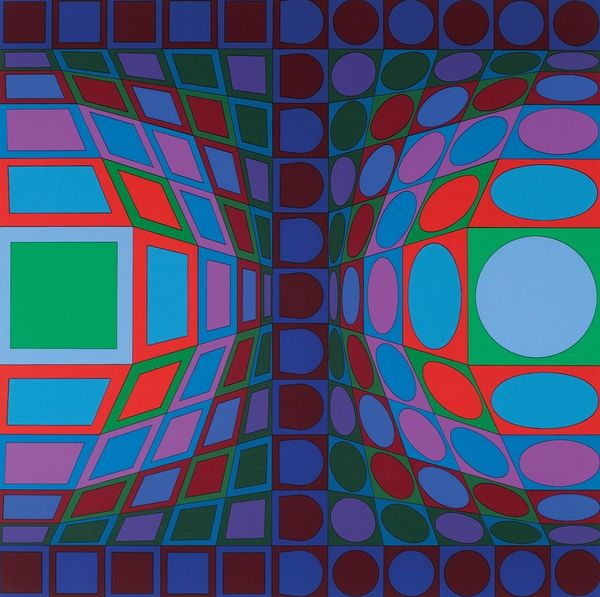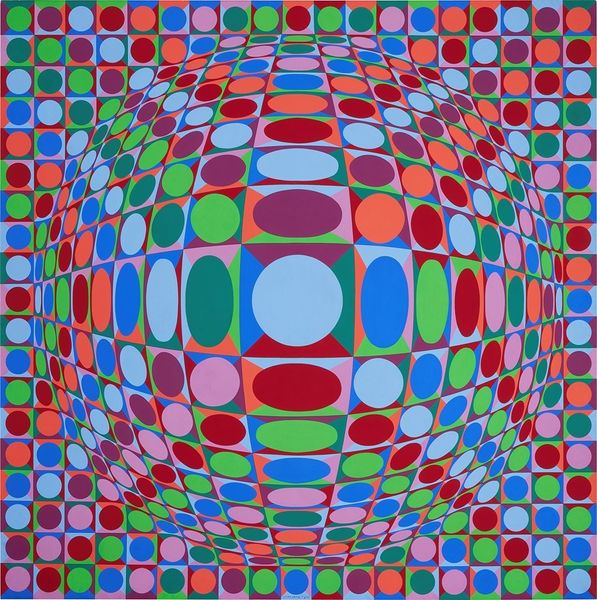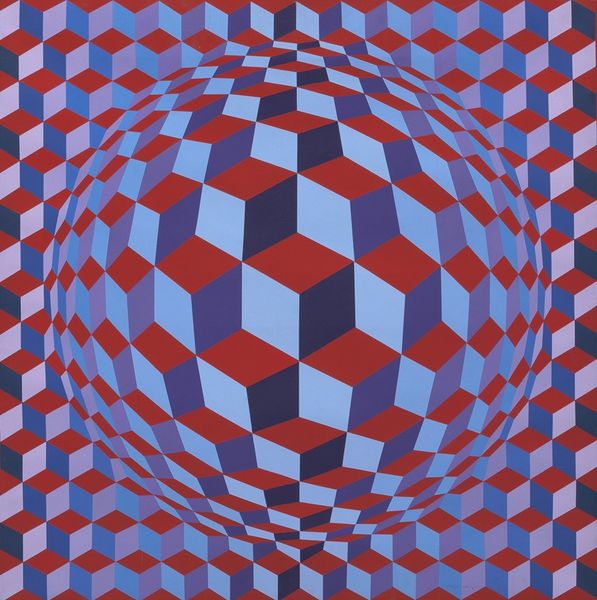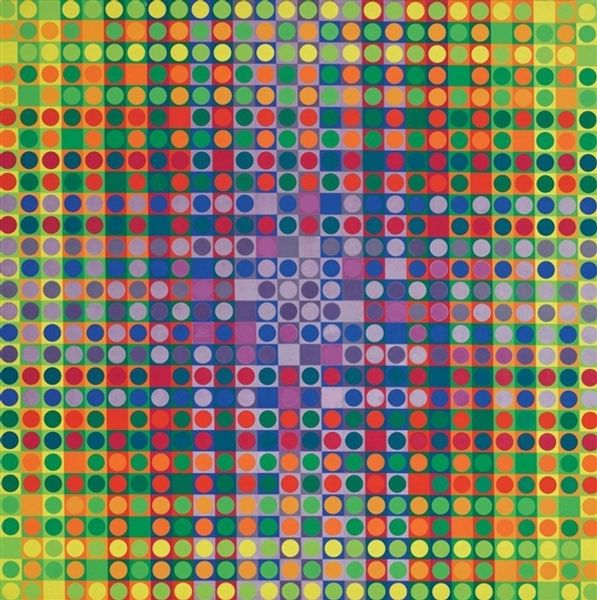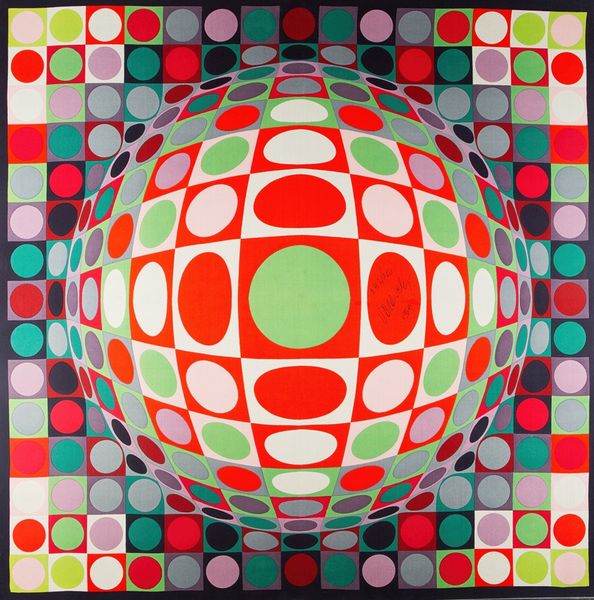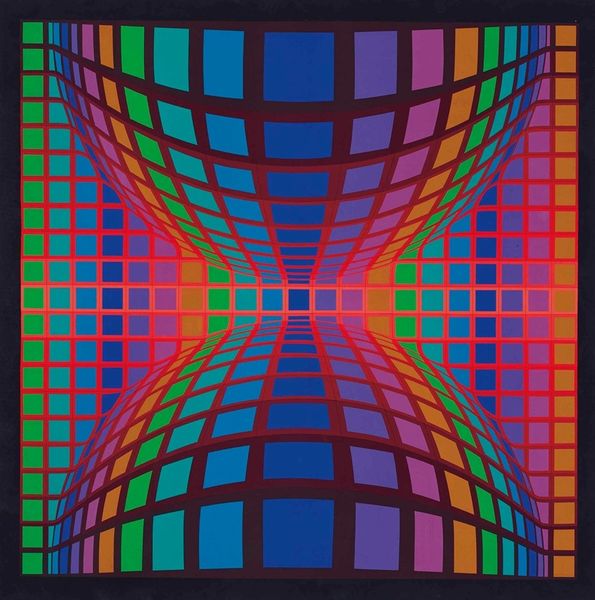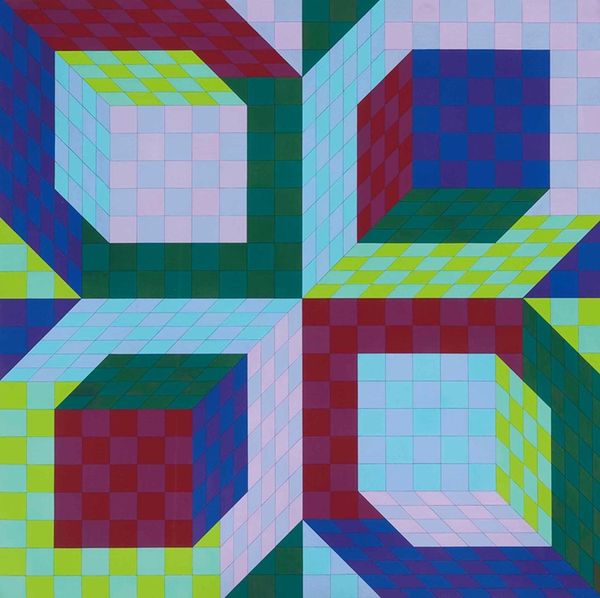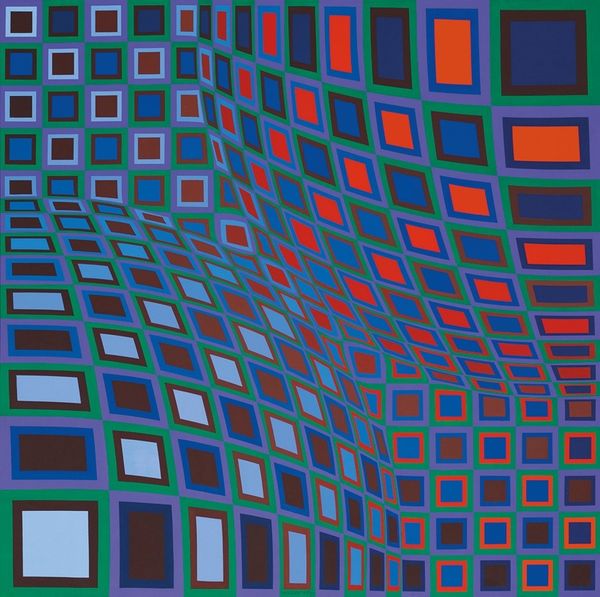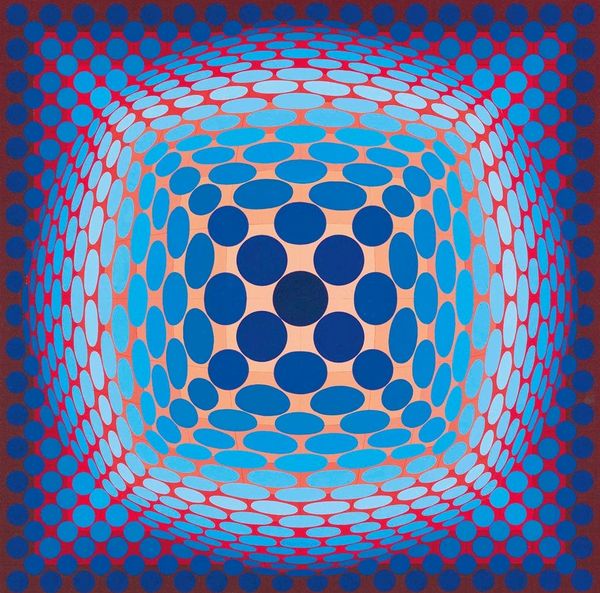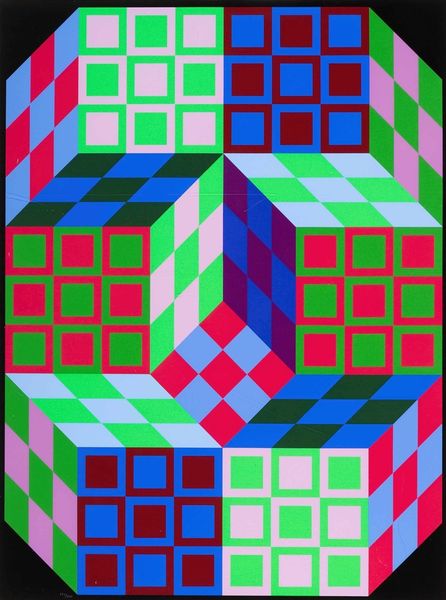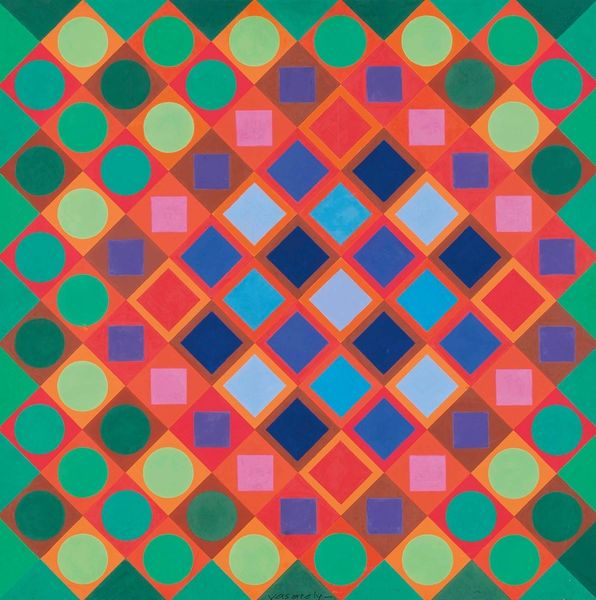
acrylic-paint
#
op-art
#
acrylic-paint
#
abstract
#
geometric pattern
#
repetitive shape and pattern
#
minimal pattern
#
geometric
#
geometric-abstraction
#
repetition of pattern
#
vertical pattern
#
regular pattern
#
pattern repetition
#
layered pattern
#
combined pattern
#
modernism
#
repetitive pattern
Copyright: Modern Artists: Artvee
Editor: Victor Vasarely's "Xanor," painted in 1979 with acrylic, really messes with my eyes. It’s this vortex of colorful squares that feels both incredibly structured and completely disorienting. I’m curious, what do you see when you look at this piece? Curator: Well, beyond the initial optical illusion, I see a reflection of the late 20th century's fascination with technology and perception. Op Art emerged during a period of rapid technological advancement, and Vasarely was very interested in using art to explore how we perceive the world in a media saturated culture. This focus ties closely to how images circulate and inform societal perceptions and power structures. How do you think a piece like this impacts its viewers? Editor: It makes me feel… almost uneasy? The colors are vibrant, but the perspective is unsettling. It's definitely not the comforting kind of art. Curator: Precisely! And that unease is partly intentional. The repetitive geometric shapes evoke a sense of industrialization and the potential dehumanizing aspects of modern life. The image's dissemination matters here, as it would have been encountered often through mass media prints. The vibrant, somewhat jarring aesthetic was embraced in advertising, but also as social commentary, especially with its links to how people consumed this "modern" visual culture. Do you think "Xanor" is effective in conveying that kind of message? Editor: I can see that, especially knowing when it was made and how prevalent that geometric style was. Before, I only thought of it as just an interesting optical illusion, but now I see a message in there too. It's thought-provoking how an image can become so ingrained in society. Curator: Exactly. And that’s the power of considering the socio-historical context! Seeing it on mass scales, its incorporation in design. The intention of the image as a visual tool takes on broader social meanings when understood as something viewed through various avenues. It also changes art from individual expression into something experienced collectively.
Comments
No comments
Be the first to comment and join the conversation on the ultimate creative platform.
